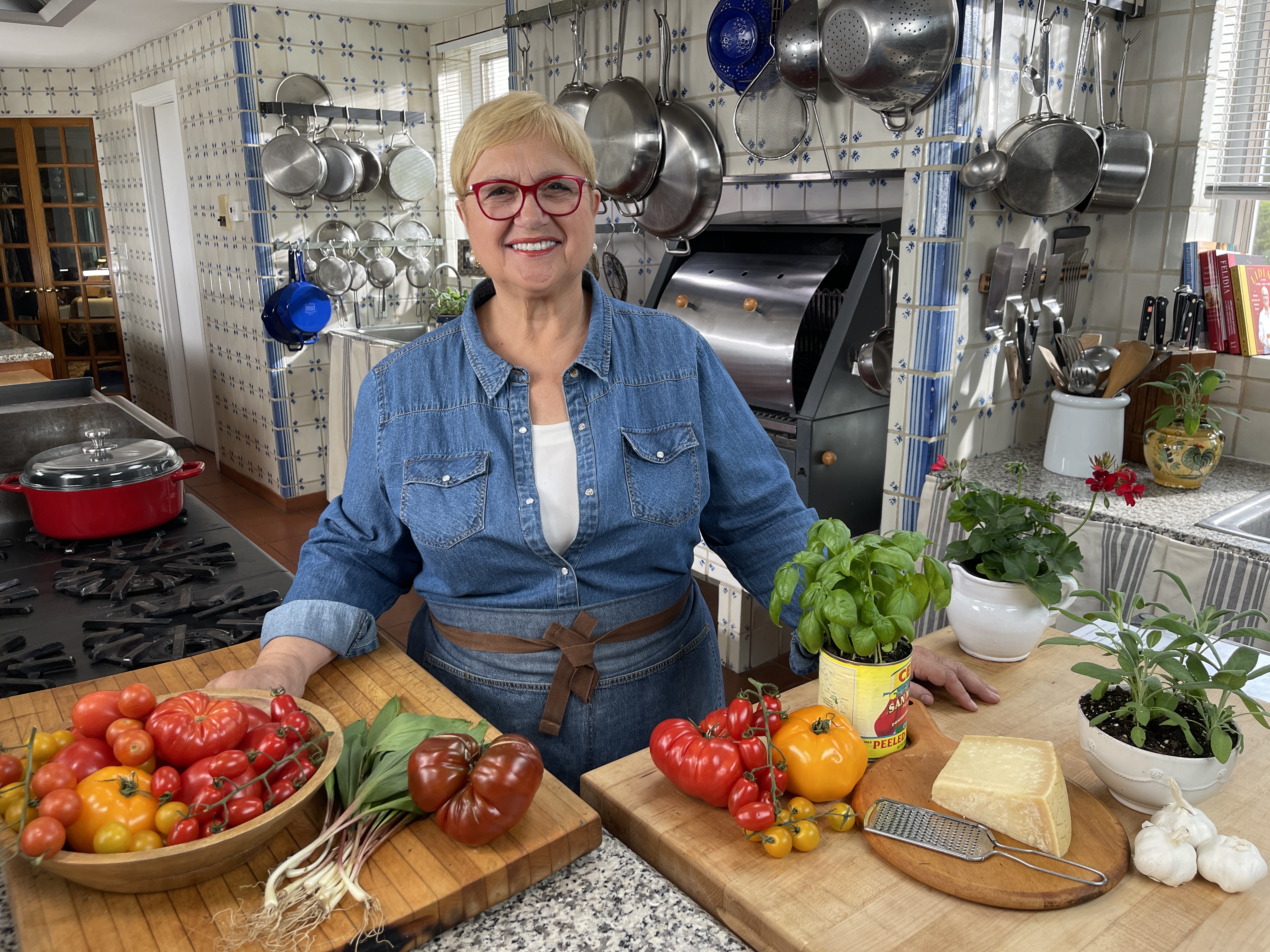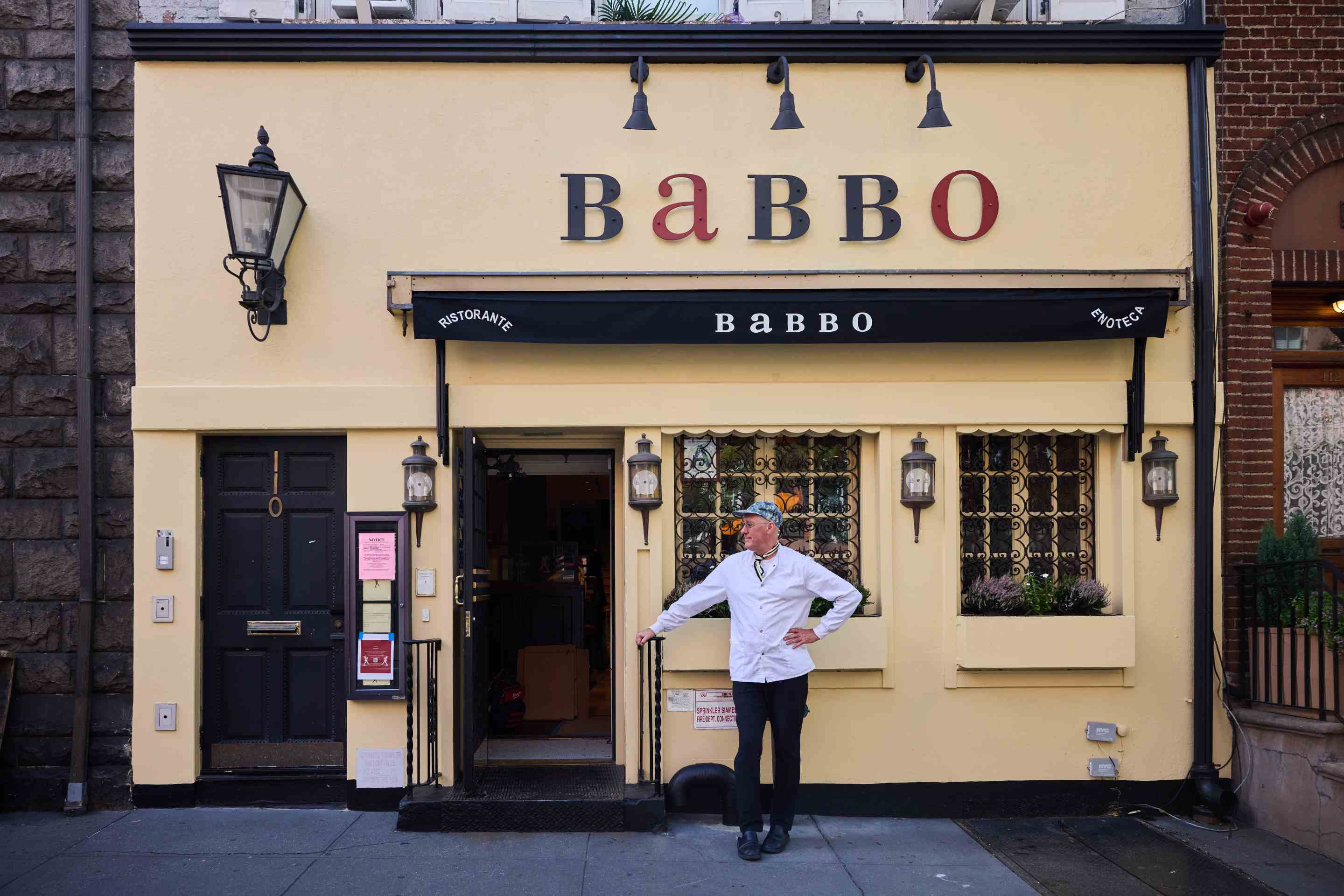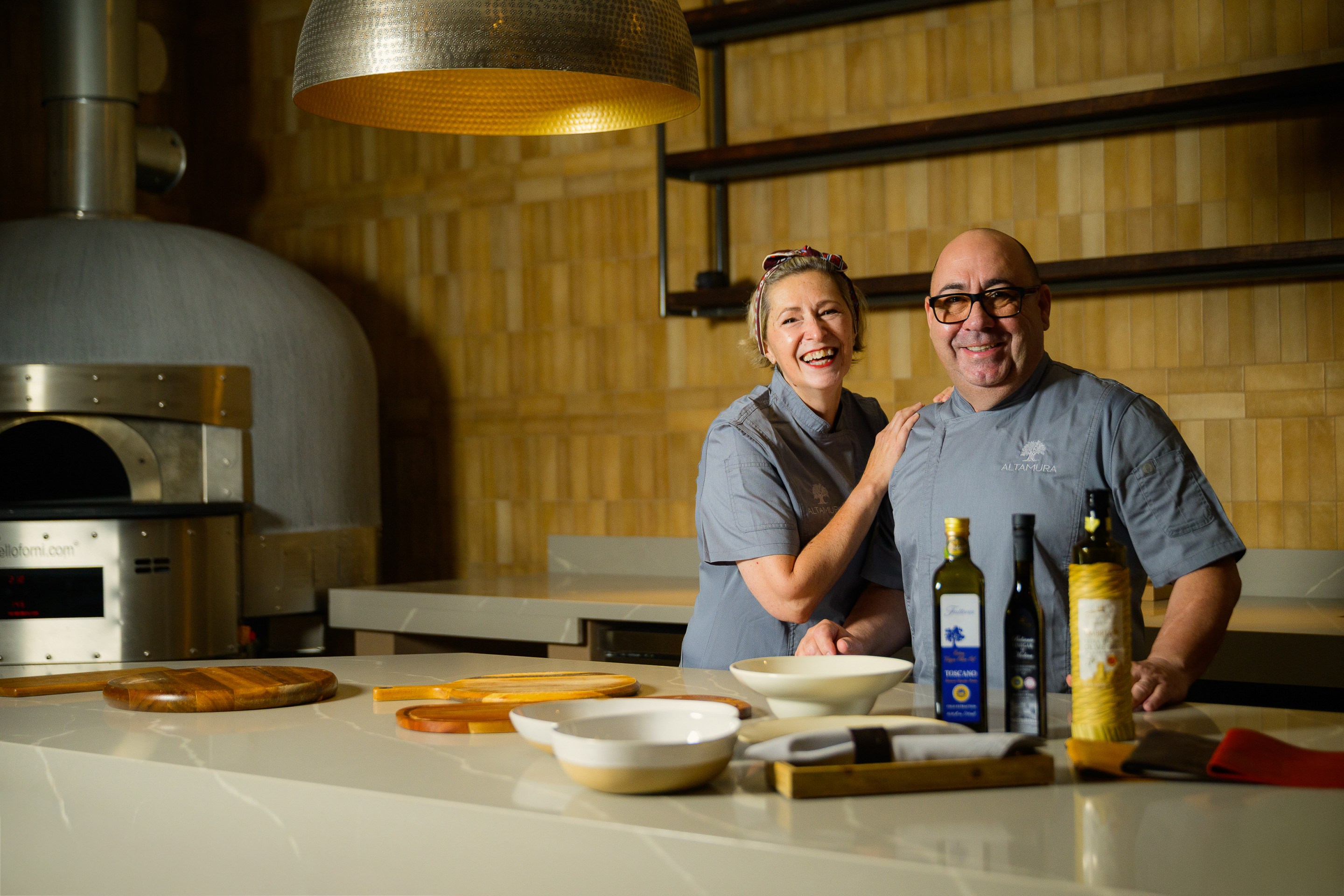The chef, cookbook author, and TV personality talks Italian and Italian-American food, cooking for Julia Child, bringing Eataly to the U.S., and more!

I meet Lidia Bastianich on a sunny spring afternoon at Bar Milano, inside Eataly Flatiron. She greets me and brings me to a table. When I ask if we could find a quieter place, she walks to the host stand, whispers a command, and a moment later, the music in the back of the restaurant is switched off. Clearly, it’s good to be the Queen.
Lidia has earned the title and the respect that comes with it. I’m meeting with her to discuss her new PBS special about the experiences of new immigrants to the United States, Lidia Celebrates America; Flavors That Define Us (covered in Part 1 of our interview). But I couldn’t help but ask questions that relate directly to why we have started Appetito—such as how Italian food, restaurants, and products have become such an important part of America’s culinary landscape.
As you might imagine, Lidia has some thoughts on such subjects, which she shares in an interview that has been edited and condensed for clarity.
How do you feel about the way that Italian food has evolved in the United States?
Well, you know, the Italian food story is like a railroad track that splits in two directions. There's Italian-American food. And then there's the traditional Italian. The first big group of Italian immigrants came at the end of the 1800s from Sicily, Campania (Naples), and Calabria. So the Italian-American cuisine is rooted in those places, with tomato, garlic, peperoncino, and all of that. These people remembered, of course, the recipes, but to transport a culinary culture you need traditional products, which they didn't find. And so they made do with what they found, what they remembered, and somehow, you know, the Italian-American cuisine was formed.
It evolved and people loved it. Italian was one of the first types of restaurant [cuisines]. The Italian home restaurants happened because the initial Italian immigrants were a lot of single men coming to make a living. The women who came with their husbands or families would make food in their home, and that became the local kind of restaurant. This is partly how the Italian-American restaurant gained popularity.

How did cooking with American ingredients change the flavors and dishes?
Tomatoes are [South] American and yet, they became Italian in a way. But the tomatoes were grown differently in Italy, like with San Marzano, which has a natural sweetness. The American tomato is always that large tomato, pomodoro; it’s very juicy with lots of seeds. And so to make sauce with with that tomato, you have to change things, because if you have a San Marzano, it’s juicy and sweet, no problem, but in America, the tomato is big and has a lot of seeds. Seeds have tannins and the sauce becomes bitter. So you have to cook it and [to make up for the lack of sweetness] you have to add additional sugar. You need to cook it for a long time, to simmer it. Of course, in Italy, they didn't have proteins, meats, [like what you’d find in America]. So now instead of putting a little piece of [meat for flavoring], in America, the sauce would get cooked with meatballs, sausages, braciola. That meant, “We live good. We can have all of this.” So the Sunday sauce, American Sunday sauce, that's not what you get in Italy.
Yes, there are so many examples of Italian immigrants changing and adapting the cuisine.
Exactly. So this Italian-American cuisine evolved. And I think it's a valiant cuisine. I think it's a beautiful cuisine. It reflects the adaptation of these people and how culinary cuisine is transported without the ingredients.

How did your cooking evolve from the time your family opened restaurants to when you opened Felidia in 1981?
When [my family] opened the first restaurant in 1971, [we] had an Italian-American chef. Now, I wasn't a full-fledged chef at that age. I was young. I mean, I cooked, I worked. So, I went in the kitchen with him. And that's why I learned the Italian-American cuisine. For the first 10 years, we had two restaurants that were Italian-American, because that's what Americans liked. But when I went to open Felidia and I became the chef, [I decided] it was time to move on. Because Italian products were now available. I needed to cook what I ate at home.
Felidia represented Italy’s 20 regions, with [menu items like] risotto and Jota, which is a sauerkraut and bean soup instead of pasta fagiole.
I read about Julia Child coming to Felidia. Can you tell us about that?
She and James Beard came, the two of them. Julia came a few times. And she wanted to know about risotto. She ordered the risotto and then wanted to learn how to make it. She came over to the house. We remained friends until her last days. And then ultimately, she says Lidia, you gotta come on my show, and I did two episodes. And that's where the producer says, “You're pretty good.”
Julia says, “Lidia, you do for Italian cuisine what I did for French cuisine.” And she encouraged me and in a sense mentored me. My mother is a teacher so I [thought], I'm going to teach my culture. Americans love it. Let me bring this into their home. That's how I transcend it: 25 years, 13 books later. And you know, it gives me great satisfaction that I am able to bring traditional food that Americans can cook.

Now, Americans are more adapted to regional Italian cuisines, but I’ve talked to many chefs around the country who had to really fight to show diners that Italian cuisine isn’t just spaghetti and meatballs. What was the turning point in your mind?
[Some of it had to do with] Americans traveling to Italy and tasting the food there. And then Italian products were becoming more available here. In my travels, I would go every year to Italy for vacation but then I would do research and whenever I found a product that I liked, I connected that producer with an importer here.
I always say the easiest way to transport a culture is by its traditional products. If you put a plate of prosciutto di Parma, some grana Padana next to it, and some good Italian wine, you might as well [be in Italy]. So, if you want to cook traditional Italian, the Italian products take you halfway there, then you need the technique. That's where I come in— teaching how to use the products and the techniques that yield a traditional dish.
Besides teaching how to cook Italian with your TV shows and cookbooks, you’ve also taught Americans about Italian products, as when you partnered with Eataly to bring the first location to the U.S., here, where we’re sitting. How did that happen?
As I said, I would do a lot of research. I [learned about traditional Italian products through Slow Food in Piemonte], and to give farmers and [purveyors] an economical platform. Then I heard that Oscar Farenetti opened Eataly in Turino, in an old Cinzano vermouth factory. I was curious. I connected with Oscar. I said, “Oscar, let's have dinner when I’m there. I want to see what you're up to.” And that's how it started.
He showed me [Eataly and its producers], and he says, “Do you think that this would work in America? And I said, I think it would work for sure, especially in New York to begin with. If you can get these products to New York, America will accept it with open arms. Sure enough, I came back and then I got my son [Joe Bastianich] involved, and we opened this as the first one.
And now there are eight locations in the United States and one in Toronto. And in late 2022, it was announced that a UK-based investment firm had bought Eataly with plans to grow it. Will you remain involved?
Right, right. We're still involved. We're going to be involved, but you know, the philosophy has to [stay true to] bringing authentic real Italian food.







